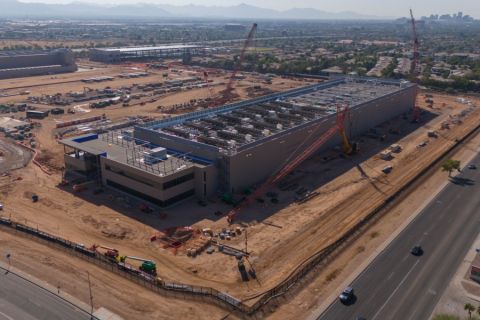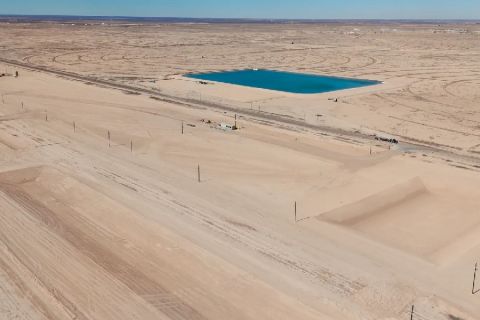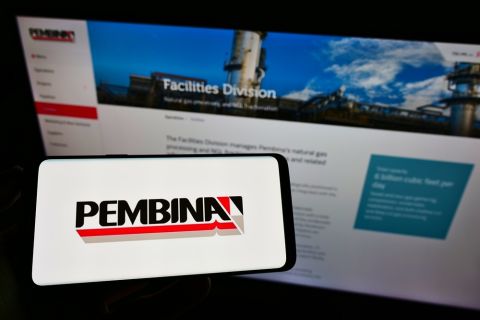Jordan Blum, Hart Energy editorial director: We're here with Kyle Koontz, the CEO of BPX Energy. Thank you so much for joining us. We're here in the BPX Denver headquarters. As the onshore shale company for BP. Can I get you to elaborate on just what stands out with the relationship with BP, how that benefits BPX?
Kyle Koontz, BPX Energy CEO: Yeah, sure. We've been on a really fantastic journey the past eight years, and the mission still stands, which is how do we combine the prowess of an international major with the nimble entrepreneurial spirit of an onshore independent? And I can't say that we got it right off the first bat, but I think just the hard work and dedication that teams have put in and how we've evolved as a company. I'm really proud of what we've accomplished and honored to be a part of it. I think we combine the best aspects of both, so we can move fast and we can adapt commercial strategies that are fit for onshore models, but combined with the global expertise and safety systems and subsurface experts that BP brings — with the addition of trading and shipping capabilities that most independents don't have. So what it sets up is a unique ability to maybe be the best onshore company.
JB: Very good. You all are positioned in the Permian, Eagle Ford, Haynesville. You've been in the job, not new to BPX, but you've been in the job for a little over six months now. Can I get you to just do a quick overview of the assets and just kind of how rapidly you are ramping up production right now?
KK: Yeah, absolutely. So we've got a great team. We've got great momentum and we've established a culture of technical innovation, which we're really seeing coming through strong in our developments, in our learning. And so we've got a great trajectory and I'm excited to kind of take a new role and keep pushing the team into the next chapter.
We've got a high quality asset base. We're core of the core in all the basins that we're in, and I think it fits squarely within BP's focus of a simple, more value focused company. So our focus is on delivery in those basins. And so starting with Delaware, we're the Texas side, the Delaware Basin, outstanding rock, good pressure and fluid windows. And so we're continuing our multiyear buildout strategy of our infield gathering. And now we're putting operational efficiencies to work and growing volumes out there. Really excited about roughly half a million acres we have in the Eagle Ford because it gives us exposure to different commodity windows.
We've got dry gas all the way to volatile oil and condensate rich gas in between. So it really allows us a lot of flexibility for different allocation scenarios to maximize our return on investment. And then we also have a core position in the Haynesville spread across both Texas and Louisiana. And we like the optionality of this play long-term, in terms of where we focus our investment because both areas are good. Our principal focus has been in northern Louisiana and will continue to be for the near term. But we like this capability because we've got high quality acreage and a deep inventory in the basin.
JB: Very good. And at least in the short term to take advantage of commodity pricing, you all are leaning into the liquid side of things a lot more in the Eagle Ford and Permian?
KK: Yeah, that's the advantage of having a mixed commodity portfolio. We've got a full bore growth strategy in the Permian, which prices have been very favorable for, and we've flexed a little bit of capital from some of the gas assets into more oily rich areas of the Eagle Ford, and then we've deferred some activity into next year for the Haynesville.
JB: Very good. And I know one area where you all are really ahead of most of the industry is electrification, especially in the Permian. Can I get your overview of where things stand, where things are headed?
RELATED
Electrifying the Permian: BPX Energy Touts Emissions Reductions in the Basin
KK: What was unique about the Permian is when we took over, it was a very underdeveloped asset. So we had a bit of a chance to have a greenfield mentality. And so our core focus for BPX to help in BP's strategy is in the resilient hydrocarbons. To do that, we need to be as efficient as possible, keep costs low, and then maximize revenue in everything we do. So when we set up the field, we look to electrification to be a key enabler to help us tap into different technologies and realize that efficiencies we couldn't get otherwise. And we're proud of the progress we've made. We have an excellent runtime on our compressors, which enables a 99.9% plant availability for our CDPs. We've seen 15% efficiency gains using e-frac technology over the conventional diesel fleets, and we've also been able to reduce our emissions almost 40% since we started operations. So we like the value proposition of electricity. Values up, emissions are down.
JB: Very good. No, that's great. Thank you so much for joining us for the OGI interview. To read and watch more, please visit online at HartEnergy.com.
RELATED
BP CEO: Final Permian Processing Facility to Come Online by Mid-year
Recommended Reading
Norwegian Energy Data Companies PGS, TGS Complete Merger
2024-07-02 - Norwegian companies PGS and TGS have completed their merger to create a full-service energy data company.
LandBridge Chair: In-basin Data Centers Coming for Permian NatGas
2024-06-28 - Newly public Delaware Basin surface-owner LandBridge Co. has a 100-year lease agreement with one developer that could result in ground-breaking in two years and 1 GW in demand.
Permian’s LandBridge Prices IPO Below Range at $17/Share, Raising $247MM
2024-06-30 - Houston-based LandBridge, which manages some 220,000 surface acres in the Permian Basin, kicked off trading at $19 per share, more than 10% above its listing price.
Pembina Pipeline to Offer $690MM in Public Debt
2024-06-27 - Pembina Pipeline Corp. is offering senior unsecured debt to extend maturity dates for near-term debt that matures between 2026 and 2029.
W&T Offshore Adds John D. Buchanan to Board
2024-04-12 - W&T Offshore’s appointment of John D. Buchanan brings the number of company directors to six.





